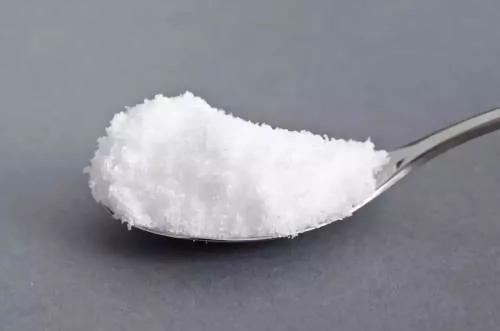What harm does acesulfame have to the human body?
Many people may not know what Ansai honey is. In fact, this is a chemical. It is widely used in the food industry. It is a kind of food additive. Just like the well-known saccharin, Ansemi will be dissolved in water and added. The food of Acesulfame will become sweeter and taste better, so such food is more popular, but some people worry that eating Ansai honey will be harmful to health.
What harm does acesulfame have to the human body?

First, the reasonable use of acesulfame in accordance with the standard will not cause harm to human health.
GB 2760 specifies the type of food and maximum use of acesulfame as a sweetener, which is determined by strict risk assessment and safety, and is basically the same as other permitted countries. On the other hand, acesulfame was listed as a Class A food additive by the FAO/WHO Joint Expert Committee on Food Additives (JECFA) in 1983 and recommended an average daily intake (ADI) of 0-15 mg/kg. Acesulfame is not metabolized or stored in the human body, and 100% of the original substance is excreted from the urine. The use of acesulfame honey in strict compliance with the standards will not cause harm to the health of consumers.
Therefore, experts suggest that first, food and Ansai honey production enterprises must strictly abide by relevant standards and regulations. Relevant food production enterprises should strictly abide by the requirements of GB2760, and reduce the use of acesulfame in food as much as possible under the premise of achieving the expected effect. It should not be used beyond the scope and exceed the limit, and be marked according to the provisions of GB7718. At the same time, Ansai Honey production enterprises must also strictly abide by relevant standards and regulations, and the products must meet the quality specifications of GB25540. The production of compound sweeteners containing acesulfame must also meet the requirements of the corresponding national standards. Second, relevant regulatory authorities should increase the promotion of Ansai Honey's standards and regulations, and strengthen supervision. The scientific knowledge of Acesulfame should be actively promoted through different channels to improve the ability of consumers to distinguish. At the same time, we will increase supervision and severely punish illegal activities that exceed the scope and exceed the limit. Third, consumers should pay attention to food labels and pay attention to reasonable diets before purchasing food. Consumers are advised to purchase products from regular channels. Before selecting foods, they can identify whether or not acesulfame is added to the food by studying the food label. For consumers who are fond of sweets, especially those with diabetes, it is recommended to use acesulfame to replace some sugar or all sugar added foods based on reasonable diet, balanced nutrition and total energy intake.
Second, acesulfame is one of the most stable sweeteners in the world.
The chemical name of acesulfame is acesulfame potassium, also known as AK sugar, white crystalline powder, soluble in water, slightly soluble in ethanol, stable to light and heat, and suitable for a wide range of pH values. One of the best sweeteners, widely used in a variety of foods, mainly to give food sweetness, but does not cause severe blood sugar reactions. In 1967, Ansai Honey was first discovered by the German Hearst Company. It was first approved in the UK in 1983 and has a sweetness of 200-250 times that of sucrose. In the late 1990s, the country established the industry standard for its products. With the continuous improvement of the production level of domestic Ansai honey, the application range in food processing is wider and wider, and a larger proportion of exports.
Third, acesulfame is widely used in the food industry.
Acesulfame is used as a sweetener in the foods of the International Codex Alimentarius Commission (CAC), the European Union, the United States, Japan, Australia, New Zealand, Canada and other international organizations, countries and regions. For example, in some countries in Europe and America, acesulfame can be used in sweet products such as beverages, confectionery, cakes, ice cream, jams, puddings, baked goods, table sweets, and dairy products.
The National Food Safety Standards for Food Additives (GB2760-2014) also stipulates that acesulfame can be used for ready-to-eat flavored foods with milk as the main ingredient or its prefabricated products (excluding ice cream and flavored fermented milk) (only Milk-based desserts), frozen drinks (except edible ice), canned fruits, jams, candied fruits, pickled vegetables, processed edible fungi and algae, canned cereals, black sesame paste, canned cereals, baked goods, beverages (packaging) Except for drinking water, jelly, table sweets, condiments, soy sauce, candy, gum-based confectionery, etc., but not allowed in cool fruit products. The country has also developed the corresponding quality specifications for the safety of the Ansai honey "food safety national standard food additive acesulfame potassium" (GB25540-2010). In addition, in accordance with the "General Principles for the Pre-packaged Food Labeling of Food Safety National Standards" (GB7718), as long as the use of acesulfame (including the use of acesulfame-containing compound sweetener) in foods must be carried out on the food label. Logo.
Send inquiry online For more product information and prices
(Pharmaceutical Ingredients Manufacturer & Supplier & Exporter.)
After sending the online inquiry, we will reply you as soon as possible, if not get any response on time please contact us by Tel or Email. —— Green Stone Swiss
Email: sales@raw-pharmaceutical-materials.comTel: +86 592 5365887
WhatsApp: +86 189 6515 7632
Send inquiry online:

